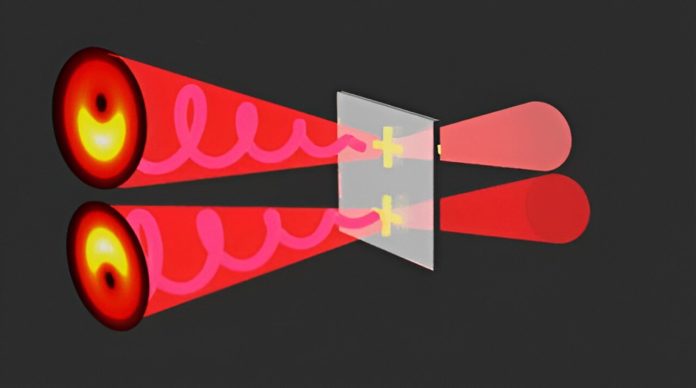
Scientists at the University of Ottawa have made a surprising discovery that changes what we know about how light interacts with materials.
They found that certain engineered symmetrical materials, called achiral plasmonic metasurfaces, can absorb light differently depending on the way the light waves are shaped.
This was unexpected because for many years, it was believed that these types of materials were not affected by light in this way.
The research, led by Professor Ravi Bhardwaj and Ph.D. student Ashish Jain, was conducted at uOttawa’s Advanced Research Complex (ARC).
They worked with other experts, including Research Engineer Howard Northfield, Professor Ebrahim Karimi, and Professor Pierre Berini, to develop and test the materials.
Using special light tools created by Karimi’s team, they were able to demonstrate that these achiral materials do indeed absorb light differently depending on the “handedness” or twist of the light waves.
Their findings, published in ACS Nano, break a long-standing belief in the field of physics.
For decades, scientists thought that achiral materials—those with symmetrical structures—couldn’t show any preference in how they absorb polarized light (light with a specific wave orientation).
But this new research proves that by using twisted light, it’s possible to control and adjust the absorption of light in these materials by up to 50%.
Key points of the discovery include:
- Challenging Old Beliefs: The research proves that even achiral materials can absorb light differently, overturning old ideas about how these materials interact with light.
- Precise Control: The team found ways to precisely control the light absorption, which could be useful in developing advanced optical devices, like switches for controlling light in technology.
- Improved Efficiency: By using twisted light, the researchers improved the materials’ ability to absorb light, making them more efficient.
- Easier to Make: These achiral materials are simpler to create, which could lead to better and more practical optical devices.
- New Understanding: The research offers fresh insights into how light interacts with materials, which could have important implications for future technologies.
“This discovery is significant because it shows that even symmetrical materials can have special light-absorbing properties,” says Ashish Jain. Professor Bhardwaj adds, “This research opens up new possibilities for next-generation technologies, including advanced sensors and optical switches.”
The study could lead to breakthroughs in fields such as spectroscopy, sensing, and optical metrology, with potential applications in creating more efficient and versatile optical devices.
Source: University of Ottawa.



